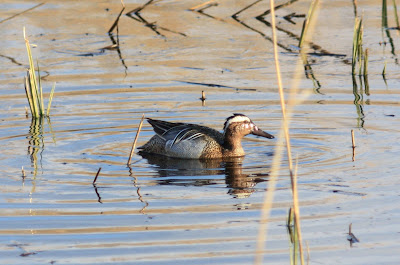RSPB North Bucks Local
Group Garden Bird Survey 2012-13
Another fascinating five months of very local
birding. Numbers fluctuated with the temperature, weather and recorder effort,
but I would say that the weekly and cumulative totals were down on previous
years.
Below is a brief, highly unscientific, synopsis
of each species, in no particular order:
Good attenders
1. Blue Tit – ubiquitous as ever, and a real
challenge to count their abundance during the Big Garden Bird Watch. Too damn
quick!
2. Blackbird – constant presence and as squabbly
as a room of MPs.
3. Starling – recorded every week but not as
many present at a time than in previous years.
4. Robin – during one cold spell, we ended up
with 4 at a time.
5. House Sparrow – a pleasing full house of
attendance and in greater numbers this year.
6. Collared Dove – not as many as in previous
years.
7. Chaffinch – the biggest flock we see all
Winter!
8. Greenfinch – omnipresent but less in number.
9. Wood Pigeon – too many!
10. Great Tit – not as abundant as their Blue
cousins.
11. Dunnock – the obligatory three.
12. Goldfinch – four fabulously feisty and fun
finches.
13. Great Spotted Woodpecker – at least two
every week, a male and female.
Occasional visitors
14. Coal Tit – much less visibility, only seen
during 3 weeks of the survey.
15. Wren – always hard to see in our garden,
though annoyingly often heard just over the fence! Only recorded during 4 weeks
of the survey.
16. Carrion Crow – a growing presence due to a
pair nesting in our neighbour’s garden that have raised a brood in the two
preceding Summers.
17. Magpie – much more visible this year and has
finally figured out the seed feeder and fat block.
18. Jay – again, much more visible this year,
though this was mainly due to another neighbour putting peanuts on her bird
table!
19. Long-tailed Tit – we’ve never had much luck
with these cuties, but this Winter was the exception. Fat blocks, that’s the
secret.
20. Blackcap – at least 2 birds present off and
on through the Winter, one male and one female, though never at the same time.
21. Reed Bunting – nearly 50% attendance!
However, we are near the canal. Again, male and female spotted, often at the
same time.
22. Sparrowhawk – only seen during 4 weeks of
the survey, but the sight of an empty garden and a small pile of feathers would
point to a greater presence than that.
23. Green Woodpecker – as in previous years,
only a very occasional visitor (recorded in 2 weeks) and never seen by me!
24. Grey Heron – put in a late appearance,
tempted by a neighbour’s pond, which, unlike our wildlife one, contains fish.
25. Fieldfare – just a couple of sightings, but
welcome nevertheless.
26. Song Thrush – a bird that we’ve always
struggled to see, though they’re heard often “just over the fence”. However,
sightings were up this year and I can only conclude that the wetter conditions
in 2012 increased the amount of snails. And the fact that the blackbirds left
it alone, for once.
27. Goldcrest – amazing Autumn visitor in the
first week.
28. Siskin – as usual, turned up in March, so
likely to be due to migration.
Fly overs
Black-headed Gull – again, always around but
never in our garden. We discovered why when…
Red Kite – seen two gardens away and scared the
life out of the crows, gulls and everything else. Investigations revealed that
one of our neighbours puts out roadkill!
Jackdaw – always around, but too timid to
venture into our small garden. I couldn’t count the one with a broken wing that
walked in under the gate during October!
No shows
Redwing – either they didn’t put in an
appearance, or we didn’t spot them.
Pied Wagtail – the first Winter when at least
one hasn’t turned up.
Brambling – not this year, unfortunately.
Bullfinch – another puzzling omission, despite
better numbers in the surrounding area.
Now that I've sealed the envelope, affixed a stamp and posted it off, I'm ready for Odo season (he said, hopefully).



.jpg)
.jpg)





.jpg)

.jpg)



.JPG)





.JPG)
.jpg)